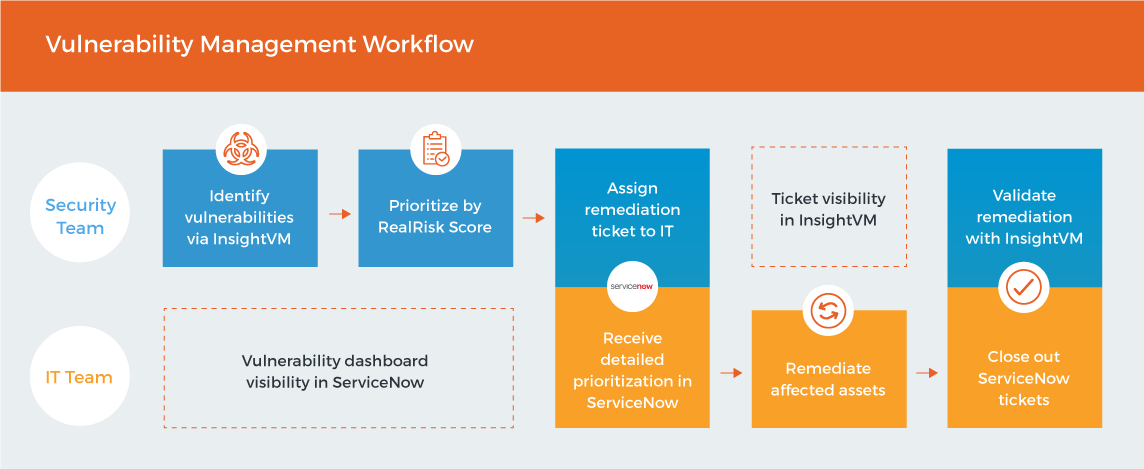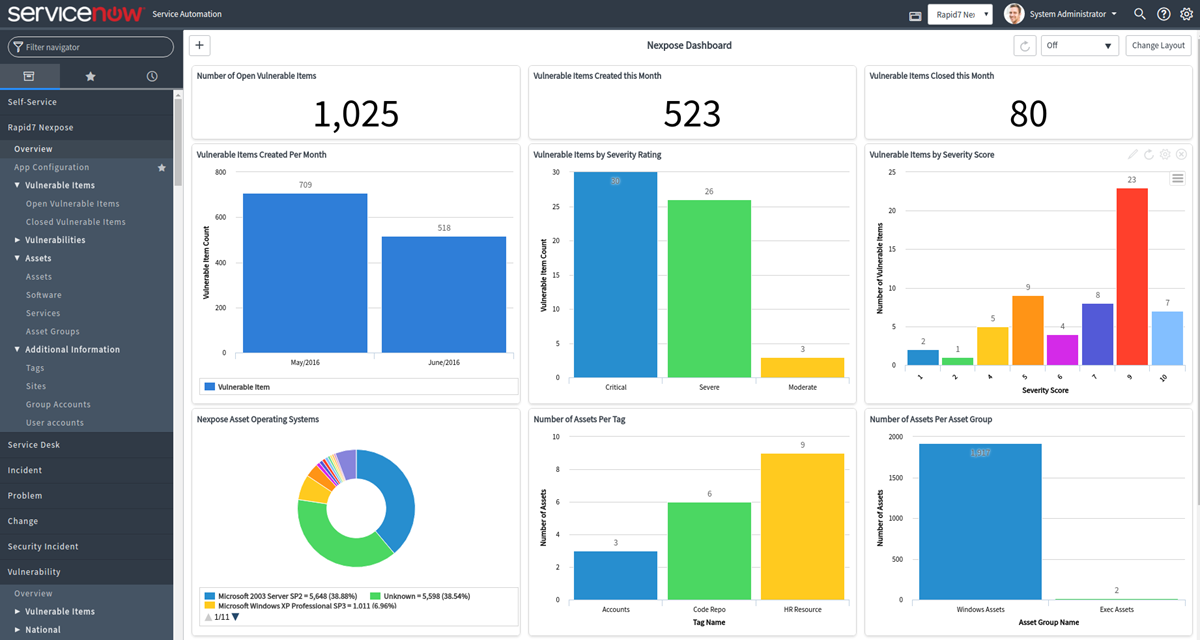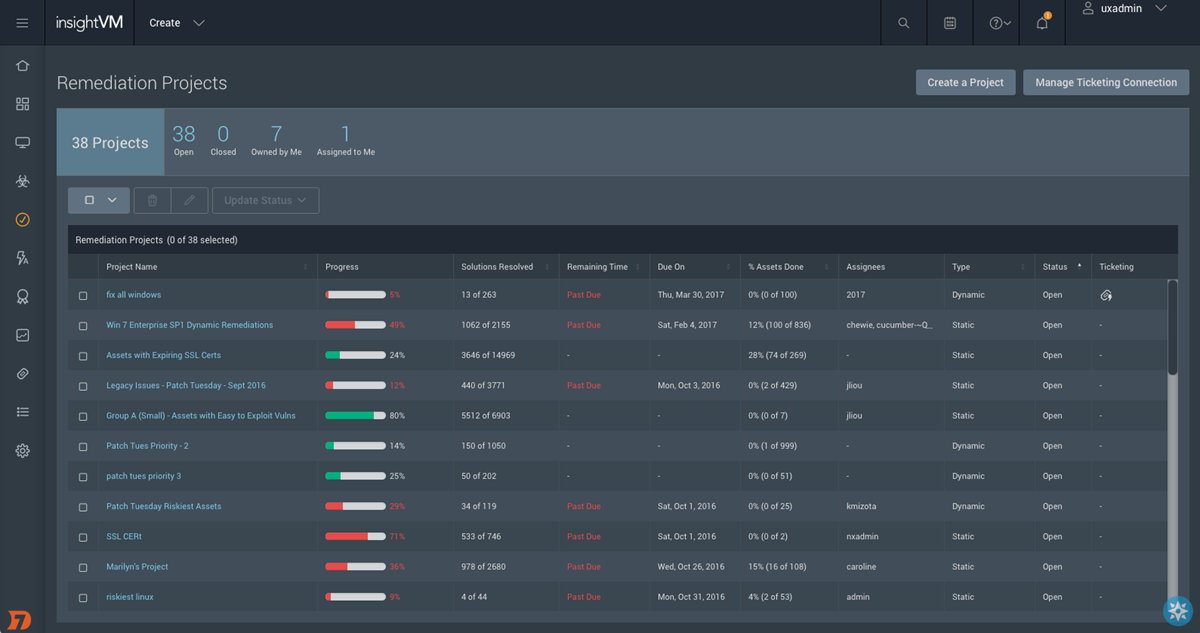Critical parts of your security program, such as threat and vulnerability management, often require multiple teams to collaborate on a single workflow. Need an example? Vulnerability management involves IT and security working closely to collect disparate data, prioritize risk, remediate, and validate fixes. By implementing SecOps principles, your team can align priorities and work off of simple, shared workflows, benefiting everyone. Rapid7 and ServiceNow tightly integrate to help teams drive SecOps and save their most valuable resource—time.
Most security and IT practitioners are all too familiar with laundry lists of vulnerabilities and remediation activities: These lists must then be prioritized—ideally by exploitability, ease of use in an attack, and presence in the wild—then communicated to IT, who will slot remediation into existing business plans and priorities. Once complete, security should validate progress through re-testing and attack simulation.

As shown in the figure above, the combination of Rapid7’s vulnerability management solution, InsightVM, and ServiceNow allows you to measurably reduce risk through a simple, automated ticketing workflow that eases collaboration between your IT and security teams. Both benefit from the increased visibility and faster mean time to resolve: That means fewer surprises and fewer late nights.

Empower IT to Trust the Process
Getting thwacked with a thick report of “high-criticality” vulnerabilities ranks pretty high on the list of IT nightmare scenarios. Just as challenging is dealing with endless remediation to-dos that lack supporting context and department stakeholders who want continuous progress updates.
Rapid7 solutions give direct visibility into that uncertainty, helping your security team accurately identify and prioritize risk across assets, web applications, and even users. Whether it’s finding vulnerabilities or detecting compromise across the attack chain, we can provide insight without the noise.
With ServiceNow, the above analysis is presented in the Rapid7 app for Security Operations VRM, which flexibly integrates with other sources of asset data. For a faster fix, tickets assigned to your IT team will always include their prioritization, supporting details, and specific instructions. Additionally, as issues are remediated, both your security and IT teams get automatically notified in-product. With tasks and owners clearly defined, you can spend less time wondering, “Who’s on this?” and finish outstanding items with the confidence that everything is going as planned.

Streamline Communication with IT and Track Progress Live
Identifying security issues on your network doesn’t do much good if they don’t actually get fixed. Coordinating remediation is a challenge for most security and IT teams, and the problems only grow as the company does. Root causes include:
- Cumbersome remediation reports without clear instructions
- Competing priorities between security and IT
- Limited visibility into remediation progress and where people may be falling behind
When critical vulnerabilities or security incidents are discovered, your security team can now leverage the ServiceNow integration to provide your IT team with essential context baked into their standard workflow. Best of all, you can track progress to understand when SLAs aren’t being met and get ahead of potential delays.
Rapid7 InsightIDR helps security teams detect all of the top attack vectors behind breaches—phishing, malware, and stolen credentials. InsightIDR natively collects data from your endpoints, security logs, and cloud services with no hardware required. Both user and Attacker Behavior Analytics are automatically applied against that data to expose malicious activity as it happens. This is the core technology behind Rapid7’s global security operations centers (SOCs), yet you can get it up and running in your environment in just hours. With built-in case management and an integration with ServiceNow, security practitioners have reported 20x faster investigations and the ability to share findings with IT via a single click.